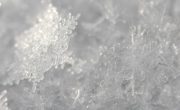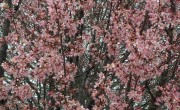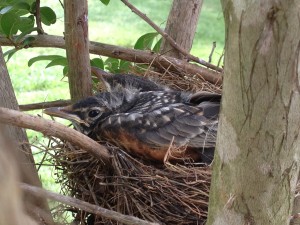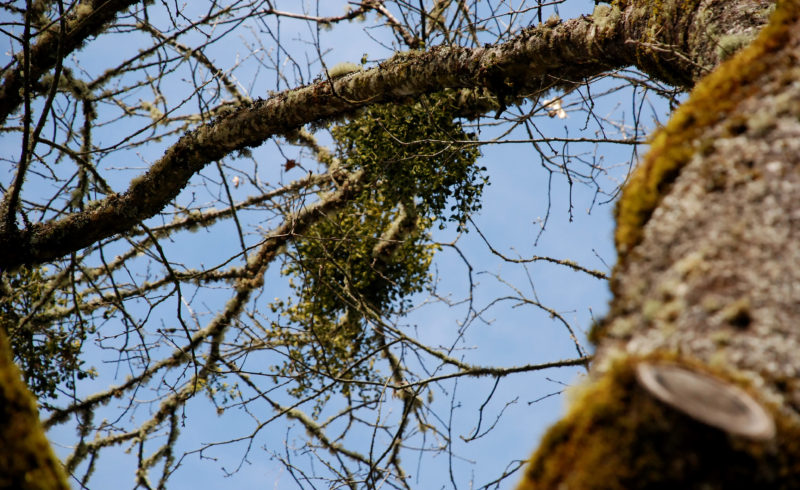
This time of year I find myself playing a scavenger hunt of sorts when I’m in the car, searching for bright tufts of green in otherwise bare trees of winter. For some strange reason it brings me great joy to find our favorite holiday parasite boldly displaying itself high in the trees for all to see. For perhaps some even stranger reason, it also brings me great joy to inform people that mistletoe is a parasite.
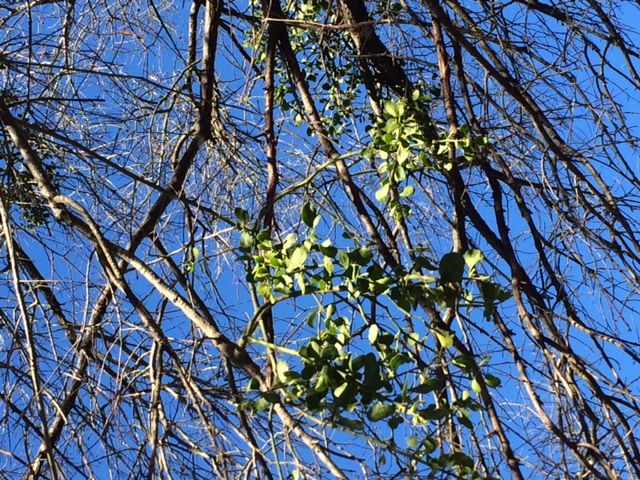 Mistletoe is an evergreen plant that makes its homes on trees, taking water and nutrients from its host. The plant is most often spread by birds who feast on the tiny white berries, which contain the plant’s seeds. While the birds are eating the berries, they often spill onto lower branches, allowing the parasite to make yet another home on its host tree. The seeds are also often spread by bird droppings. Interestingly enough, the word mistletoe is derived from the Old English ‘mistel,’ which means to fall or drizzle, and ‘tan,’ which means twig (doesn’t sound as romantic when you put it that way, huh?). There is even a bird called Mistle thrush, and you can guess what its favorite food is.
Mistletoe is an evergreen plant that makes its homes on trees, taking water and nutrients from its host. The plant is most often spread by birds who feast on the tiny white berries, which contain the plant’s seeds. While the birds are eating the berries, they often spill onto lower branches, allowing the parasite to make yet another home on its host tree. The seeds are also often spread by bird droppings. Interestingly enough, the word mistletoe is derived from the Old English ‘mistel,’ which means to fall or drizzle, and ‘tan,’ which means twig (doesn’t sound as romantic when you put it that way, huh?). There is even a bird called Mistle thrush, and you can guess what its favorite food is.
This plant has a storied past, believed to play a large role in Druidic and Nordic mythology, and believed to find its way into Western holiday traditions as the kissing bough in the Victorian era. I’m what some might call a minimalist decorator when it comes to the holidays, but mistletoe is something I’ve always looked forward to at Christmas.
Mistletoe is often found high in trees, but if you find a low hanging bunch, try using this bit of nature to spruce up your holiday decorations.
Because mistletoe is indeed a parasite, it can cause some damage to its host plants but it rarely kills them. Don’t worry too much about it, though, as the most effective treatment method is to cut off the mistletoe. When the mistletoe is too high to reach, just take time to admire the small but mighty bursts of green which thrive in the colder temperatures. For me, it’s a reminder of persistence and our wonderful ability as humans to find beauty and romance nestled among the bare branches of a winter tree.




